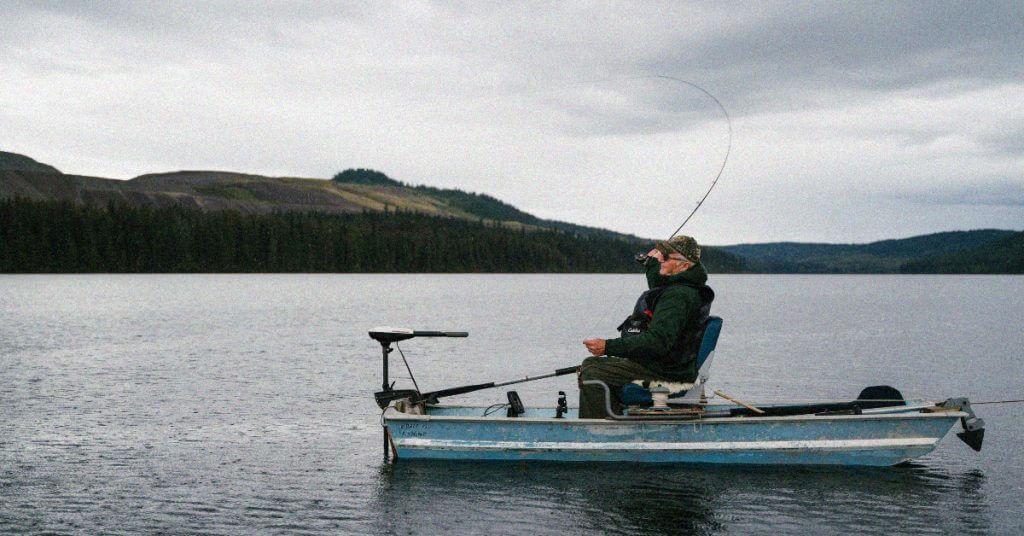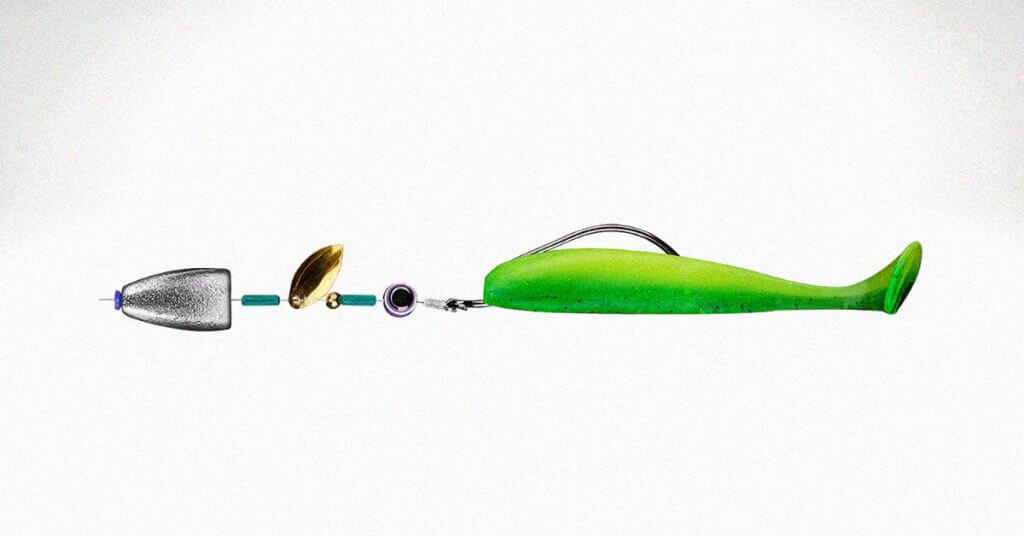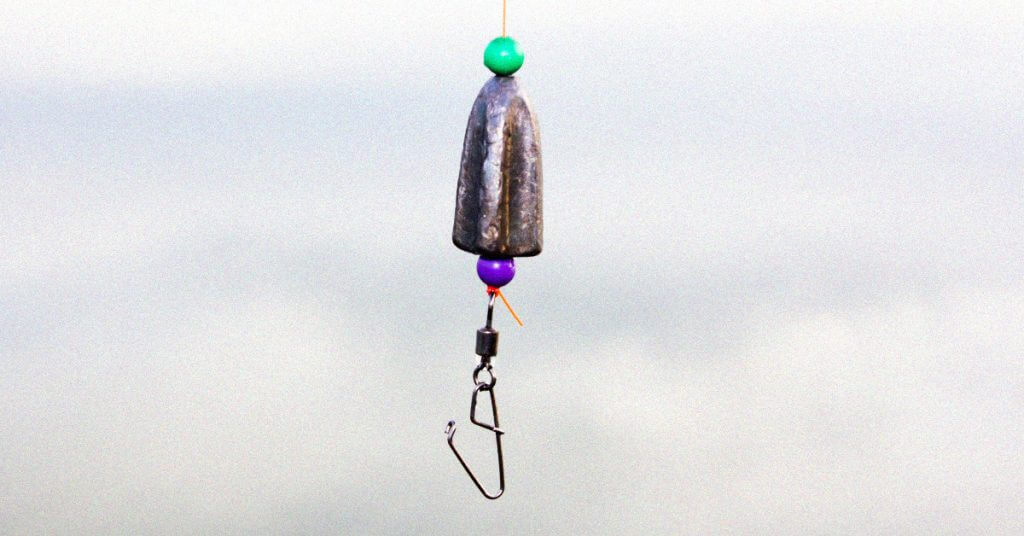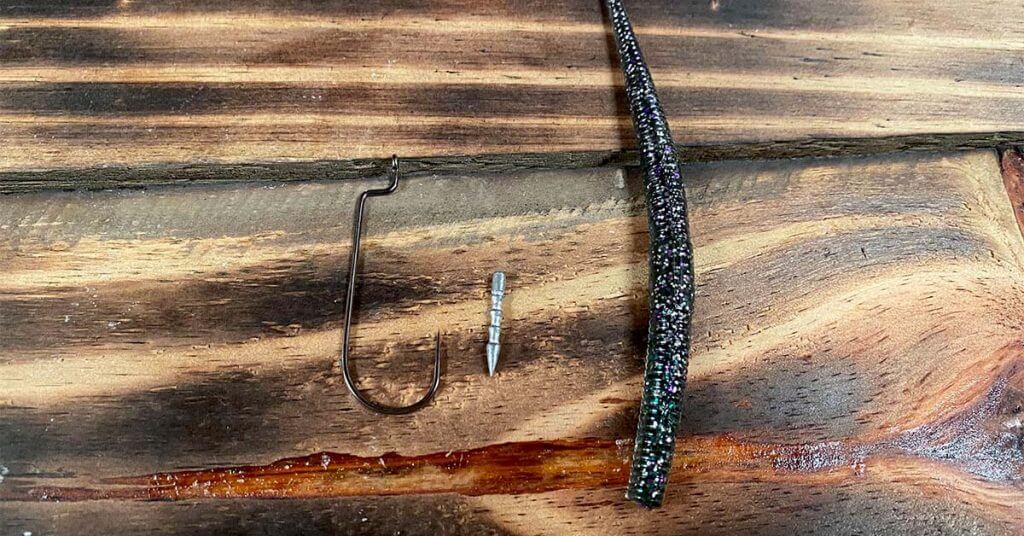Understanding the ins and out of the Neko rig will help you fine-tune this lure to be your go-to almost any time of year.
Using just a straight worm, nail weight, and hook, you can make one in less than two minutes with items already in your tackle box.
It’s so successful because it imitates a worm or small fish bouncing along the pond or lake floor looking for grub.
I’ve created plenty of my own Neko rigs over my fishing career, but I’ve also gathered info on some favorite Neko rig setups from the pros, tips and tricks to make them, and the science behind how they work so well.
Let’s dive in.
- How to Create a Neko Rig
- Neko Rig Setup for Bass Fishing
- Where to Fish Neko Rig
- Required Gear for Neko Fishing Rig
- Neko Rig Fishing Techniques
- Neko Rig Fishing Tips
- Frequently Asked Questions
- How to Create a Neko Rig
- Neko Rig Setup for Bass Fishing
- Where to Fish Neko Rig
- Required Gear for Neko Fishing Rig
- Neko Rig Fishing Techniques
- Neko Rig Fishing Tips
- Frequently Asked Questions
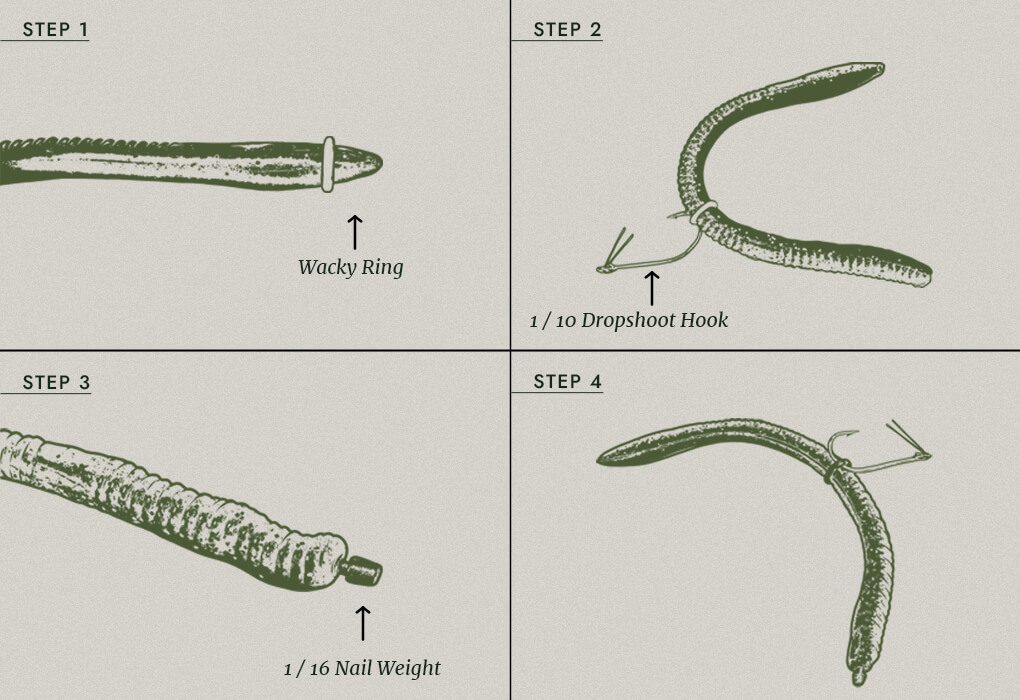
How to Create a Neko Rig
- Place an O-ring over the worm
- Secure the hook up perpendicularly to the worm between the O-ring and worm.
- Insert the weight into the head of the worm.
- Bam! You’re ready to fish.
YourBassGuy.com Community Coordinator Wesley Littlefield takes a deep dive into how he uses the Neko Rig in various situations in the YouTube video.
Neko Rig Setup for Bass Fishing
The Neko rig is incredibly versatile. You can use many different soft plastics, hooks, and materials for the O-ring.
You’ll be able to make one of these worm fishing rigs out of things you already have in your tackle box.
Choosing Your Worm
Essentially any old straight tail worm you have in your tackle box should work as long as it is straight.
Most worms used in this rig tend to be in the 5 to 10-inch range.
The best worms for a Neko rig are:
While it is not common, you can also rig up a craw plastic for this lure.
Weighting Your Rig
What separates a Neko from any old wacky worm setup is the weight. By adding weight to the head of the worm, it sinks straight down.
When inserting the weight, make sure it is placed straight down the worm to keep it balanced, preventing any wiggling as it sinks.
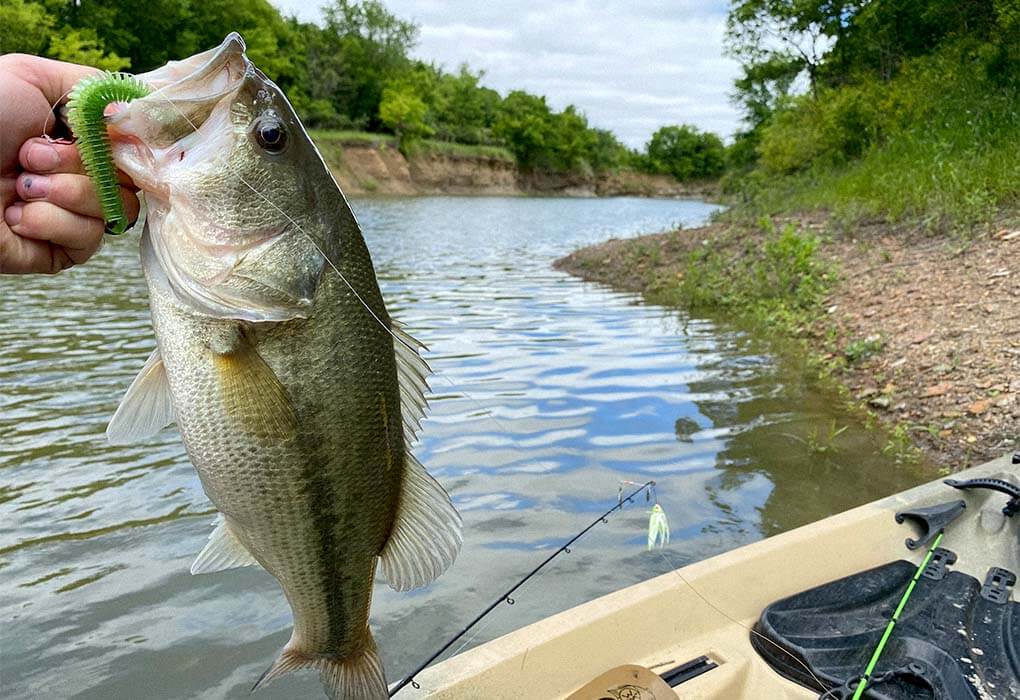
The most common nail weights for fishing this lure are 1/16 ounce and 3/32 ounce, although many people go down to a 1/32 ounce or even up to a ⅛ ounce.
Many people opt for drywall screws or finishing nails between ½ and 1 ½ inch that they can insert directly into the worm.
These are equivalent to around a 1/16 ounce tungsten Neko rig weight.
If the worm has a pointy head, feel free to snip it off so you can insert the weight into a bulkier spot.
Lastly, you can choose from mushroom weights or normal, straight weights. The mushroom weight is a bit more centralized, assuring a straight fall and pointed placement, but both work well for this rig.
Reinforcing the Worm
You may find that these worm rigs are stolen quite a bit, or the hook works its way out of the worm.
For this reason, people put O-rings, or something similar, on the center of the worm to insert the wacky hooks into.
While most will use an O-ring from the local hardware store or tackle stop, there are other options.
Just about anything small and circular should work.
Getting the O-ring or o-ring substitute on can be quite tricky.
A wacky-rig tool is a device where you insert the worm into the hollow end and roll the rubber band or o-ring onto the other.
The tapered build of the tool allows you then to roll the o-ring onto the center of the worm. There are also plier-like tools that can hold an o-ring and slide it on.
Not everyone reinforces the worm, but I highly recommended it if you don’t want to keep buying new worms every day.
Hook Choice
If you’re looking for one of the best weedless rigs for bass, you can make the Neko into one. Simply put on a weedless hook or cover and you’re good to go.
While most hooks will get the job done, bass anglers like to use sizes 1 or 2.
A longer hook shaft will get your knot tie further from the worm but may catch a bit more even with a weed guard. Opt for a shorter shaft if you’re in a highly weeded area.
Some common Neko rig hooks used are the VMC Neko hook or the Gamakatsu Finesse Wide Gap Hook.
Where to Fish Neko Rig
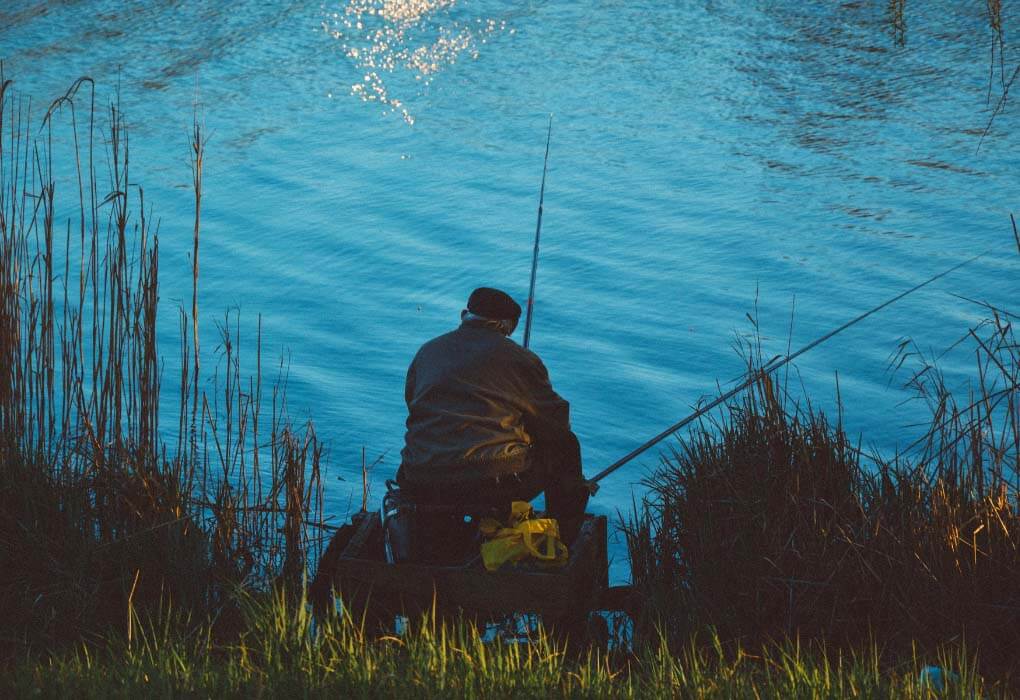
The Neko rig is one of the most versatile rigs around. It can fish both shallow and deep water, in clear spots, or dense vegetation and rocky ledges.
But, most anglers use it in the clear water as it is not a flashy lure.
While it is extremely popular when bass fishing in Japan, it is commonly used by professional anglers and weekend warriors worldwide in all kinds of lakes and ponds.
Most commonly, this rig is worth trying when nothing else is working. They are also known for catching pressured fish, like during the eleventh hour of a fishing competition.
Many Neko rigs are nibbled on the fall, so try using it anywhere you’d use a drop shot.
Places like points, ledges, drop-offs, bluff walls, or deep docks are excellent choices to sink it.
Make sure there is some slack in the line when you throw it so that it sinks right down to the bottom.
Many anglers find more bites if they place it around brush, wood, or rocky spots to lure fish out of hiding.
Required Gear for Neko Fishing Rig
Anytime you want to fish this lure, you’ll need four items, at a minimum.
These are:
- Rod
- Reel
- Line
- Spinning Gear
Rod & Reel
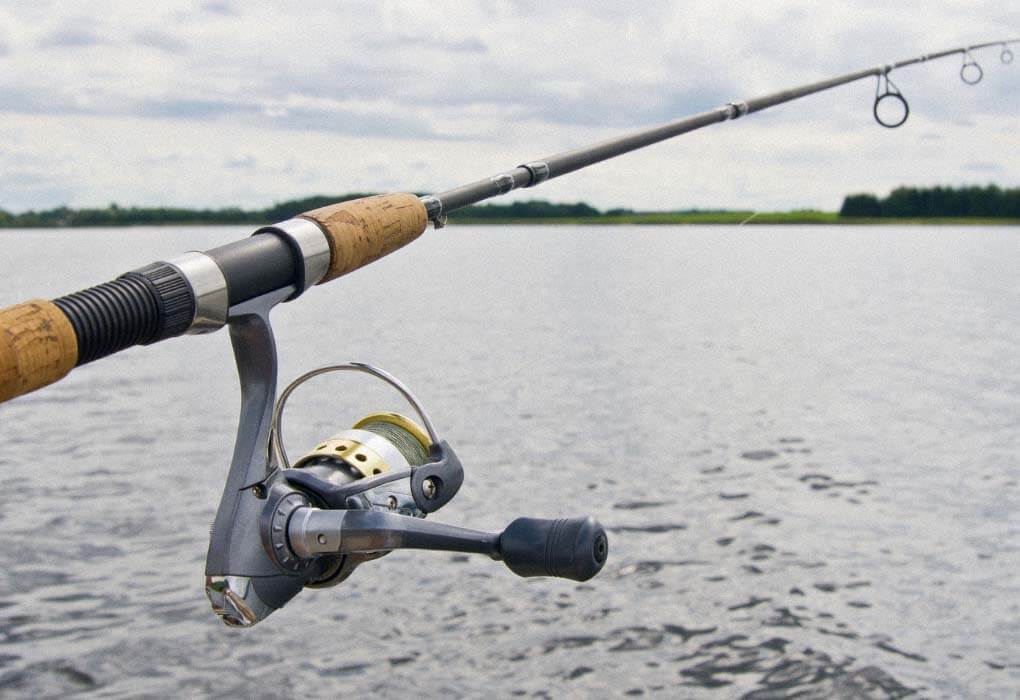
While most use a spinning reel for this, it can be fished with a baitcasting reel as well. The most important thing is to make sure you have slack in your line to let it sink to the bottom.
A heavier rod will help you hold the worm well when the bottom-fish start biting.
Choosing Your Line
Finesse is key here, as this rig relies significantly on your ability to feel it on the bottom of the lake or pond.
Especially when starting out, choose a lightweight line between two and five pounds to fish. This will give you the most control and feel of the line as you’re learning.
As you understand how the rig moves and works, you can bump up the weight if you need to.
In shallow water, use a fluorocarbon leader line cut to the depth of the water. This will work similar to a bobber and help you know when you get a bite.
Spinning Gear
Spinning gear is preferred as it is easier to cast and feel the Neko, but don’t worry, you can make do with whatever you have on hand.
A spinning rod and reel will give you better control of the rig as it drops back down to the floor.
While pretty much any spinning gear will work with the Neko, I’d suggest somewhere around a seven-foot rod and 2500-size spinning reel for the best control and feel.
Neko Rig Fishing Techniques
Brandon Palaniuk got his biggest fish at the 2017 Bassmaster Elite Series with a Neko Rig thanks to using proper technique.
The Neko is a subtle lure, so power finesse fishing is vital to success with it. Once you feel it hit, you can twitch your rod to help the worm dance along the bottom.
Some anglers pick it up about a foot at a time while others try to have it bounce along the floor.
The goal is to have the weighted end stay on the bottom and move side to side while the top of the worm wiggles, making the worm appear to be swimming and digging for food.
Make sure to keep the line tight so that the worm stands up straight, rather than flopping over.
This technique is useful for ledge fishing too. You can let the worm dance and fall near the ledge, looking for the bass that are tucked into the cool shade.
Neko Rig Fishing Tips
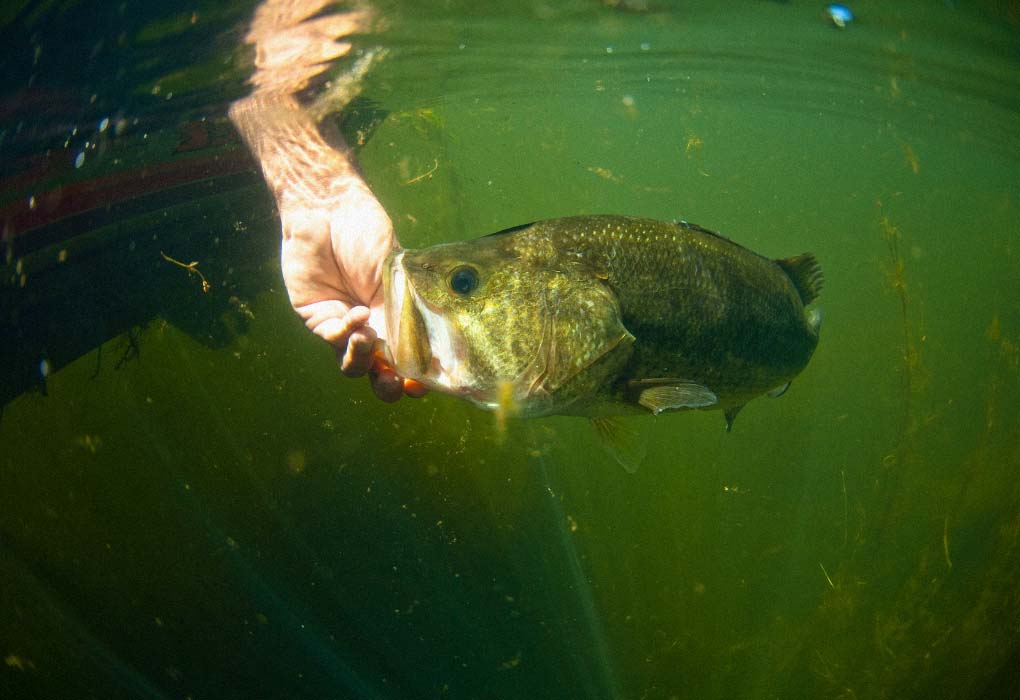
These rigs are fairly simple, but the pros have truly shown off their advantages in recent years. Here are a few tips to keep the fish biting:
1. Keep steady pressure on the line to ensure the worm is standing up, not just flopped along the bottom.
2. Choose thick-plastic, durable Neko baits to ensure the fish don’t steal the lures off your hook.
3. Once the fish has bit the hook and begun to shake, make sure to lead it away from the brush.
4. Make sure your nail weight is inserted straight into the head of the worm and isn’t too heavy or too light for a proper drop speed.
5. Fish the Neko in deep water. This lure is great for bringing in those fish who lurk at the bottom and are not going for other bait.
Frequently Asked Questions
What hooks for Neko rig?
The best hooks to use for a Neko rig are the VMC Neko hook and the Gamakatsu Finesse Wide Gap Hook.
What is the best hook size for a Neko rig?
The best hook size for a Neko rig is 1 or 2.
Does the Neko rig work?
Yes. The Neko rig is a finesse presentation that works in many situations.
Understanding the ins and out of the Neko rig will help you fine-tune this lure to be your go-to almost any time of year.
Using just a straight worm, nail weight, and hook, you can make one in less than two minutes with items already in your tackle box.
It’s so successful because it imitates a worm or small fish bouncing along the pond or lake floor looking for grub.
I’ve created plenty of my own Neko rigs over my fishing career, but I’ve also gathered info on some favorite Neko rig setups from the pros, tips and tricks to make them, and the science behind how they work so well.
Let’s dive in.
- How to Create a Neko Rig
- Neko Rig Setup for Bass Fishing
- Where to Fish Neko Rig
- Required Gear for Neko Fishing Rig
- Neko Rig Fishing Techniques
- Neko Rig Fishing Tips
- Frequently Asked Questions
- How to Create a Neko Rig
- Neko Rig Setup for Bass Fishing
- Where to Fish Neko Rig
- Required Gear for Neko Fishing Rig
- Neko Rig Fishing Techniques
- Neko Rig Fishing Tips
- Frequently Asked Questions

How to Create a Neko Rig
- Place an O-ring over the worm
- Secure the hook up perpendicularly to the worm between the O-ring and worm.
- Insert the weight into the head of the worm.
- Bam! You’re ready to fish.
YourBassGuy.com Community Coordinator Wesley Littlefield takes a deep dive into how he uses the Neko Rig in various situations in the YouTube video.
Neko Rig Setup for Bass Fishing
The Neko rig is incredibly versatile. You can use many different soft plastics, hooks, and materials for the O-ring.
You’ll be able to make one of these worm fishing rigs out of things you already have in your tackle box.
Choosing Your Worm
Essentially any old straight tail worm you have in your tackle box should work as long as it is straight.
Most worms used in this rig tend to be in the 5 to 10-inch range.
The best worms for a Neko rig are:
While it is not common, you can also rig up a craw plastic for this lure.
Weighting Your Rig
What separates a Neko from any old wacky worm setup is the weight. By adding weight to the head of the worm, it sinks straight down.
When inserting the weight, make sure it is placed straight down the worm to keep it balanced, preventing any wiggling as it sinks.

The most common nail weights for fishing this lure are 1/16 ounce and 3/32 ounce, although many people go down to a 1/32 ounce or even up to a ⅛ ounce.
Many people opt for drywall screws or finishing nails between ½ and 1 ½ inch that they can insert directly into the worm.
These are equivalent to around a 1/16 ounce tungsten Neko rig weight.
If the worm has a pointy head, feel free to snip it off so you can insert the weight into a bulkier spot.
Lastly, you can choose from mushroom weights or normal, straight weights. The mushroom weight is a bit more centralized, assuring a straight fall and pointed placement, but both work well for this rig.
Reinforcing the Worm
You may find that these worm rigs are stolen quite a bit, or the hook works its way out of the worm.
For this reason, people put O-rings, or something similar, on the center of the worm to insert the wacky hooks into.
While most will use an O-ring from the local hardware store or tackle stop, there are other options.
Just about anything small and circular should work.
Getting the O-ring or o-ring substitute on can be quite tricky.
A wacky-rig tool is a device where you insert the worm into the hollow end and roll the rubber band or o-ring onto the other.
The tapered build of the tool allows you then to roll the o-ring onto the center of the worm. There are also plier-like tools that can hold an o-ring and slide it on.
Not everyone reinforces the worm, but I highly recommended it if you don’t want to keep buying new worms every day.
Hook Choice
If you’re looking for one of the best weedless rigs for bass, you can make the Neko into one. Simply put on a weedless hook or cover and you’re good to go.
While most hooks will get the job done, bass anglers like to use sizes 1 or 2.
A longer hook shaft will get your knot tie further from the worm but may catch a bit more even with a weed guard. Opt for a shorter shaft if you’re in a highly weeded area.
Some common Neko rig hooks used are the VMC Neko hook or the Gamakatsu Finesse Wide Gap Hook.
Where to Fish Neko Rig

The Neko rig is one of the most versatile rigs around. It can fish both shallow and deep water, in clear spots, or dense vegetation and rocky ledges.
But, most anglers use it in the clear water as it is not a flashy lure.
While it is extremely popular when bass fishing in Japan, it is commonly used by professional anglers and weekend warriors worldwide in all kinds of lakes and ponds.
Most commonly, this rig is worth trying when nothing else is working. They are also known for catching pressured fish, like during the eleventh hour of a fishing competition.
Many Neko rigs are nibbled on the fall, so try using it anywhere you’d use a drop shot.
Places like points, ledges, drop-offs, bluff walls, or deep docks are excellent choices to sink it.
Make sure there is some slack in the line when you throw it so that it sinks right down to the bottom.
Many anglers find more bites if they place it around brush, wood, or rocky spots to lure fish out of hiding.
Required Gear for Neko Fishing Rig
Anytime you want to fish this lure, you’ll need four items, at a minimum.
These are:
- Rod
- Reel
- Line
- Spinning Gear
Rod & Reel

While most use a spinning reel for this, it can be fished with a baitcasting reel as well. The most important thing is to make sure you have slack in your line to let it sink to the bottom.
A heavier rod will help you hold the worm well when the bottom-fish start biting.
Choosing Your Line
Finesse is key here, as this rig relies significantly on your ability to feel it on the bottom of the lake or pond.
Especially when starting out, choose a lightweight line between two and five pounds to fish. This will give you the most control and feel of the line as you’re learning.
As you understand how the rig moves and works, you can bump up the weight if you need to.
In shallow water, use a fluorocarbon leader line cut to the depth of the water. This will work similar to a bobber and help you know when you get a bite.
Spinning Gear
Spinning gear is preferred as it is easier to cast and feel the Neko, but don’t worry, you can make do with whatever you have on hand.
A spinning rod and reel will give you better control of the rig as it drops back down to the floor.
While pretty much any spinning gear will work with the Neko, I’d suggest somewhere around a seven-foot rod and 2500-size spinning reel for the best control and feel.
Neko Rig Fishing Techniques
Brandon Palaniuk got his biggest fish at the 2017 Bassmaster Elite Series with a Neko Rig thanks to using proper technique.
The Neko is a subtle lure, so power finesse fishing is vital to success with it. Once you feel it hit, you can twitch your rod to help the worm dance along the bottom.
Some anglers pick it up about a foot at a time while others try to have it bounce along the floor.
The goal is to have the weighted end stay on the bottom and move side to side while the top of the worm wiggles, making the worm appear to be swimming and digging for food.
Make sure to keep the line tight so that the worm stands up straight, rather than flopping over.
This technique is useful for ledge fishing too. You can let the worm dance and fall near the ledge, looking for the bass that are tucked into the cool shade.
Neko Rig Fishing Tips

These rigs are fairly simple, but the pros have truly shown off their advantages in recent years. Here are a few tips to keep the fish biting:
1. Keep steady pressure on the line to ensure the worm is standing up, not just flopped along the bottom.
2. Choose thick-plastic, durable Neko baits to ensure the fish don’t steal the lures off your hook.
3. Once the fish has bit the hook and begun to shake, make sure to lead it away from the brush.
4. Make sure your nail weight is inserted straight into the head of the worm and isn’t too heavy or too light for a proper drop speed.
5. Fish the Neko in deep water. This lure is great for bringing in those fish who lurk at the bottom and are not going for other bait.
Frequently Asked Questions
What hooks for Neko rig?
The best hooks to use for a Neko rig are the VMC Neko hook and the Gamakatsu Finesse Wide Gap Hook.
What is the best hook size for a Neko rig?
The best hook size for a Neko rig is 1 or 2.
Does the Neko rig work?
Yes. The Neko rig is a finesse presentation that works in many situations.

